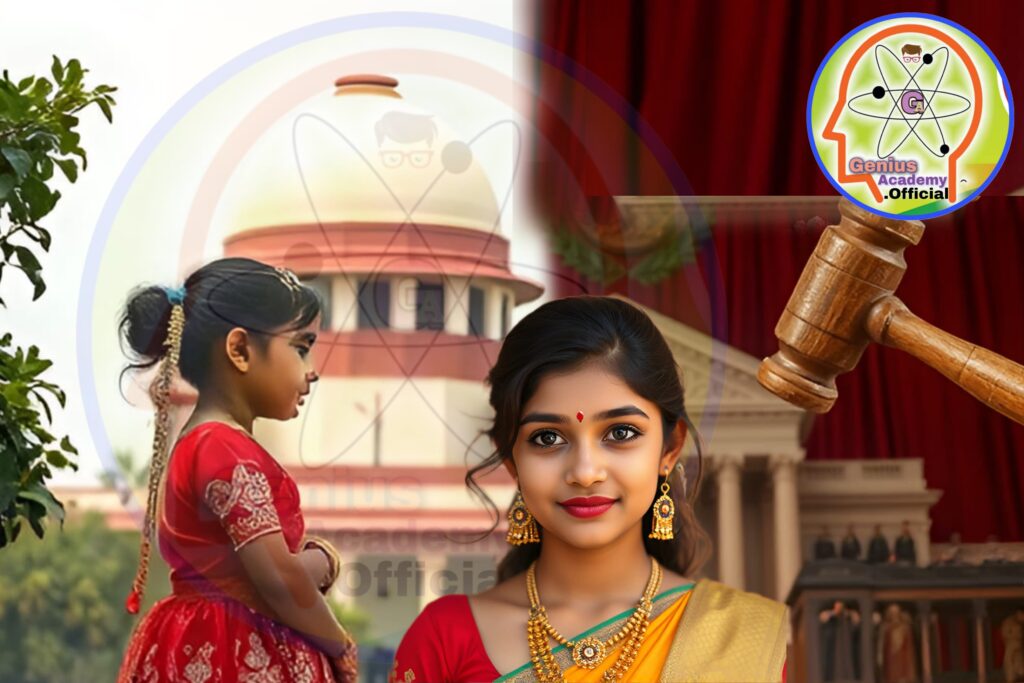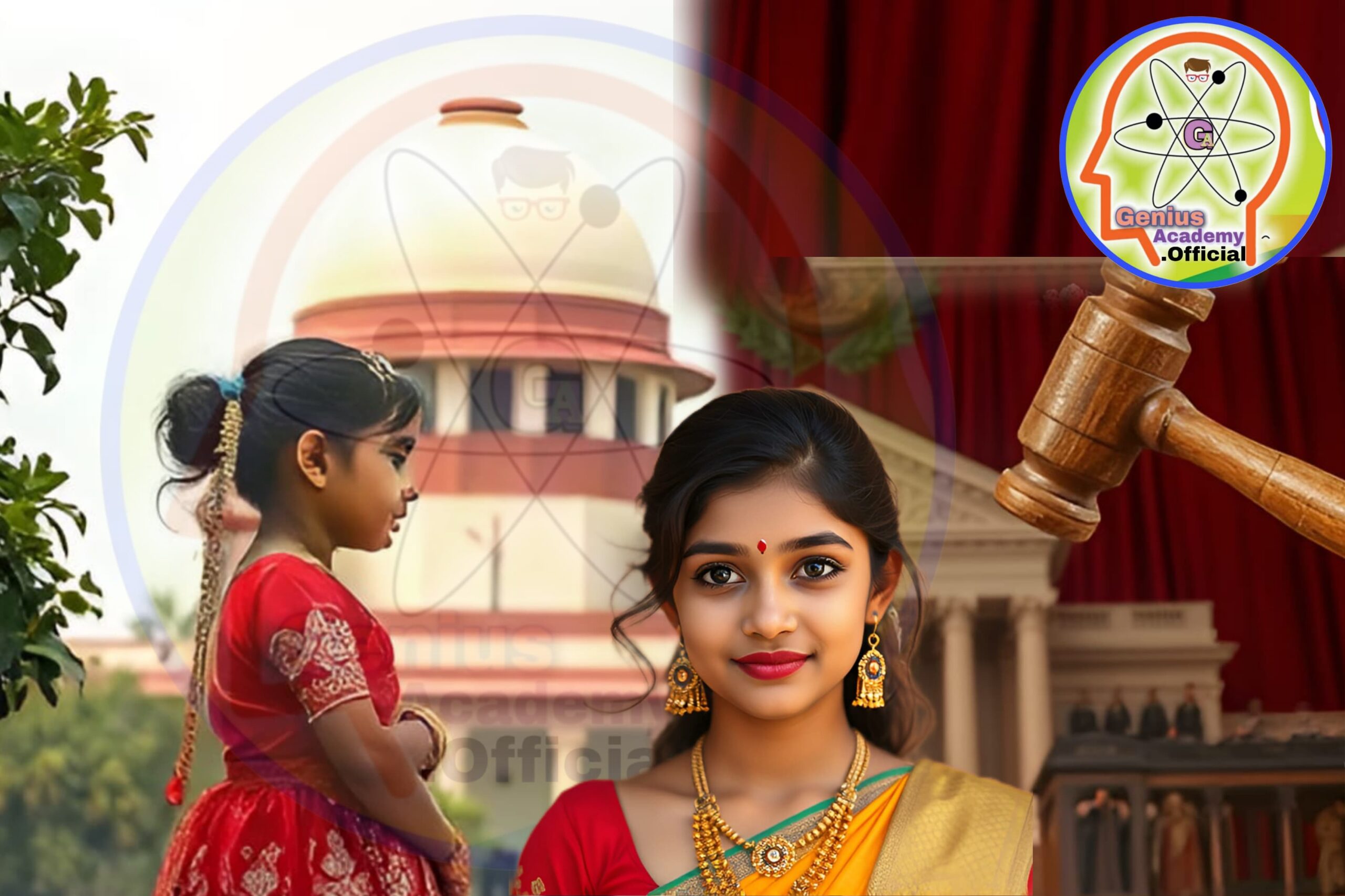
Reframing the Approach to Child Marriage: The Recent Judgment of Supreme Court of India
In a landmark decision earlier this month, the Supreme Court of India addressed the complex issue of child marriage, shifting the focus from solely penalizing such unions to emphasizing the need for comprehensive support for victims. This judgment, in the case of Society for Enlightenment and Voluntary Action v. Union of India, highlighted a broader approach to child marriage—one that goes beyond prevention and punishment to assist those affected by these early marriages in reclaiming their autonomy and navigating life with greater agency.
The Context: Understanding Child Marriage in India
Child marriage remains a persistent issue, especially among young women in rural and disadvantaged communities. According to data from the National Family Health Survey (NFHS), the proportion of women aged 20-24 who were married before turning 18 has decreased significantly, from 47.4% in 2005 to 23.3% in 2021. While this trend demonstrates progress, the United Nations’ Sustainable Development Goal (SDG) 5, which calls for eliminating child marriage by 2030, remains ambitious. In recent years, governmental actions to curb child marriage have often focused on prevention and punitive measures, as seen in Assam, where mass arrests targeted men who married minors.
Legal Framework: The Prohibition of Child Marriage Act (PCMA)
The Prohibition of Child Marriage Act, 2006 (PCMA), forms the core legislative response to child marriage in India. Under this law, a “child marriage” is defined as one where either spouse is under the legal marriageable age—21 for men and 18 for women. Such marriages are termed “voidable,” meaning they remain legally valid unless the underage spouse actively seeks annulment. However, in some states, such as Karnataka and Haryana, all child marriages are declared void from inception.
The annulment process under PCMA differs fundamentally from divorce. While divorce involves ending a marriage that is recognized as having legally existed, annulment renders a marriage null and void from the beginning, as if it never happened. For annulment under PCMA, the only requirement is proof of the child’s age and confirmation of the marriage’s occurrence during their minority.
In addition to annulment, the PCMA offers civil remedies, including provisions for maintenance, residence orders, and the return of gifts exchanged at the wedding, designed to support minors exiting these unions.
Limitations and Challenges of Criminalizing Child Marriage
Criminal provisions under PCMA and related laws like the Protection of Children from Sexual Offences (POCSO) Act, 2012, and the Bharatiya Nyaya Sanhita (BNS) criminalize the performance, facilitation, and promotion of child marriage. Under these laws, adults engaging in or facilitating child marriage can face legal consequences. However, these punitive measures have led to concerns about the unintended impacts on the minors involved.
For example, criminal actions taken against a young bride’s family and husband may leave her in a vulnerable position, lacking both familial support and financial independence. Furthermore, criminalization can deter adolescents from accessing reproductive and sexual healthcare, as seeking such services might inadvertently trigger legal action against their families. This situation may ultimately exacerbate the young person’s marginalization and limit their options for support.
Studies highlight further complexities in the use of criminal provisions. Research by the Delhi-based group Partners for Law in Development, examining 73 judgments between 2008 and 2017, revealed that criminal provisions under the PCMA were twice as likely to be used in cases of self-initiated marriages rather than arranged ones. A 2024 study conducted by Enfold Proactive Health Trust and Civic Data Lab found similar trends across Assam, Maharashtra, and Tamil Nadu, where 49.4% of PCMA cases involved self-initiated marriages. In many instances, young people turn to marriage to escape difficult circumstances, such as neglect or abuse, seeing marriage as a means to assert autonomy within a restrictive social framework.
The Supreme Court Judgment: Emphasizing Support Over Punishment
The Supreme Court’s recent judgment recognizes the need for a more holistic approach. Rather than focusing solely on criminalizing child marriage, the Court emphasized the importance of creating supportive structures for individuals exiting these marriages. A key aspect of the judgment is its directive to introduce a specialized scheme for skill development and vocational training for women who leave child marriages, empowering them to achieve economic stability and independence. These programs would provide rehabilitation services, along with follow-up monitoring, to support reintegration and ensure that these women are not left in vulnerable situations.
Additionally, the Court urged consideration of compensation for victims of child marriage under existing victim compensation schemes. This recommendation reflects the recognition that many individuals who are or have been in child marriages face social and economic repercussions that require comprehensive redress.
For individuals who remain in child marriages, the judgment recognizes the need for resources that enable them to exercise agency within these relationships. Empowering them with information and skills, particularly related to reproductive rights, employment, and education, is essential to promoting self-advocacy. The Supreme Court’s call for sex education is a forward-thinking step in this regard, aiming to equip adolescents with the necessary tools to navigate their relationships effectively.
The Way Forward: Beyond Punitive Measures
The Supreme Court’s judgment is a significant step toward a balanced approach to child marriage. It underscores the need for multi-faceted strategies that include, but are not limited to, prevention and punishment. Addressing child marriage requires understanding the cultural, social, and economic drivers that compel individuals, especially girls, to marry at an early age. These include poverty, limited access to education, gender discrimination, and social norms that encourage early marriage.
Efforts to combat child marriage must be accompanied by increased investment in education and economic opportunities for young people, particularly young women. Improving access to education not only delays the age of marriage but also enhances individuals’ ability to make informed decisions about their lives. Education campaigns at the community level, targeting parents and community leaders, can also help to shift social attitudes and reduce the prevalence of child marriage over time.
Furthermore, it is crucial to strengthen the implementation of civil remedies under PCMA, including maintenance and residence orders, to ensure that minors seeking annulment are not left financially insecure. Support from government and non-governmental organizations in providing shelter, counseling, and legal aid can further empower minors to make choices in their best interests.
Conclusion: Towards Empowerment and Autonomy
The Supreme Court’s decision represents a shift towards a more compassionate and realistic approach to child marriage, balancing the need for justice with sensitivity to the complex realities faced by young people involved in such unions. Recognizing that child marriage is a deeply entrenched social issue, the judgment calls for policies that go beyond penal measures to support those affected in reclaiming their lives and asserting their autonomy.
Moving forward, it is essential for policymakers, social workers, and educators to build on the Court’s recommendations. A comprehensive approach that addresses both the structural drivers of child marriage and the individual needs of those affected is crucial to creating a society in which every individual can exercise their rights and build a life of their choosing. As India continues its journey towards the Sustainable Development Goal of eliminating child marriage, the Supreme Court’s judgment serves as a reminder that real progress requires not only legal measures but also compassionate support and empowerment for those most vulnerable.
Source: The Indian Express

